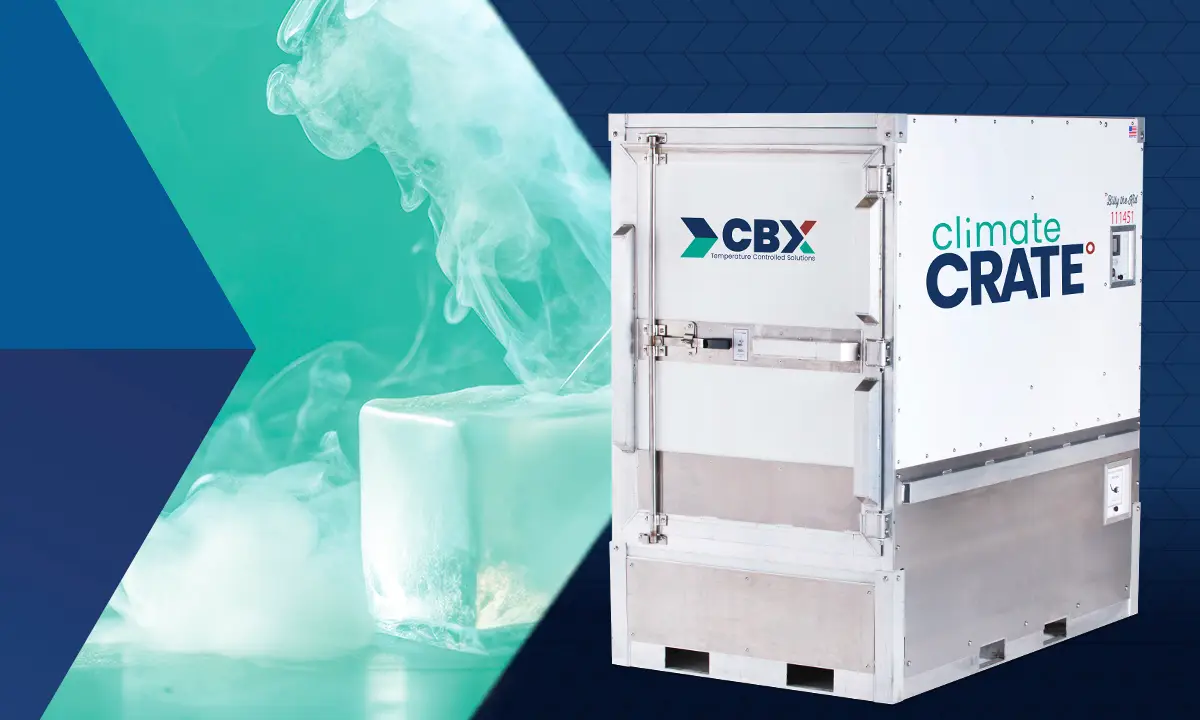
Traditionally, dry ice has been a go-to passive refrigeration solution to keep sensitive items frozen during shipping. The low temperature of dry ice, -109.3°F (-78.5°C), relative longevity, and its property of sublimating (returning to a gas, rather than a liquid when it melts) make it a decent option for certain materials and shipping needs. But what option is best for shipments that must remain in the -35°C range?
The Traditional Choice: Dry Ice
Dry ice (solid carbon dioxide):
- Passive Temperature Control: Dry ice lacks temperature-control abilities, meaning it cannot be adjusted to accommodate shipping delays, ambient temperatures, or set for precision refrigerated or frozen temperatures. While it’s great for shipments that must remain frozen, temperature-sensitive items that need more precise temperatures or must remain in the -35°C range should use an alternative shipping method.
- Limited Duration: It sublimates (turns directly from solid to gas) over time and is not reusable.
- Handling: It is important to note that handling dry ice without proper PPC (Personal Protective Clothing), such as gloves, can cause severe burns.
- Environmental Impact: As dry ice sublimates, it releases carbon dioxide into the atmosphere, contributing to greenhouse gas emissions.
The Alternative: ClimateCrate™
Sustainability goals, tightening shipping regulations, and a demand for more reliable performance are pushing businesses to seek alternatives to dry ice. ClimateCrate doesn’t just meet these new expectations — it exceeds them. With lower operational risks, greener credentials, and lower total cost, it positions organizations for smarter, more resilient temperature-controlled shipping and storage.
Rather than relying on passive cooling like dry ice, ClimateCrate:
- Uses an actively refrigerated system to maintain precise temperature settings.
- Offers real-time monitoring and smart control, ensuring your sensitive materials stay within strict tolerances and uniformity.
- Reduces handling risks, making shipping safer for staff and recipients.
- Lessens carbon footprint, thanks to its reusable and energy-efficient design.
ClimateCrate brings a new level of performance and confidence to industries where temperature deviations can lead to massive financial losses or compromised product integrity.
Head-to-Head Comparison: Dry Ice vs. ClimateCrate
Dry Ice
-
Temperature Control
Ultra-cold but passive; risk of warming as ice sublimates
-
Safety
Burn risks, CO₂ ventilation needed
-
Environmental Impact
CO₂ emissions, single-use waste
-
Cost Over Time
Ongoing material and disposal costs
-
Regulatory Compliance
Restricted quantities, shipping challenges
-
Duration
Limited to hours or a few days
ClimateCrate
-
Temperature Control
Adjustable, actively maintained
-
Safety
Safe, no handling risks
-
Environmental Impact
Eco-friendly, reusable system
-
Cost Over Time
One-time investment with long-term savings
-
Regulatory Compliance
Easier compliance, fewer restrictions
-
Duration
Extended multi-day or longer hold times, rechargeable
Conclusion
Dry ice has served cold shipping well for many years, but it’s not the best for -35°C range shipping needs. Whether you’re moving biologics, pharmaceuticals, or research samples, precision and reliability are everything in temperature-sensitive shipping. ClimateCrate offers a future-forward solution that delivers longer duration, better safety, sustainability, and compliance with changing regulations.
Ready to upgrade your temperature-controlled shipping? Contact us today to learn more about how ClimateCrate can transform your cold chain operations or learn more about our pallet-sized cold chain shipping and storage containers.